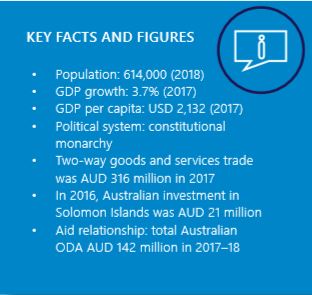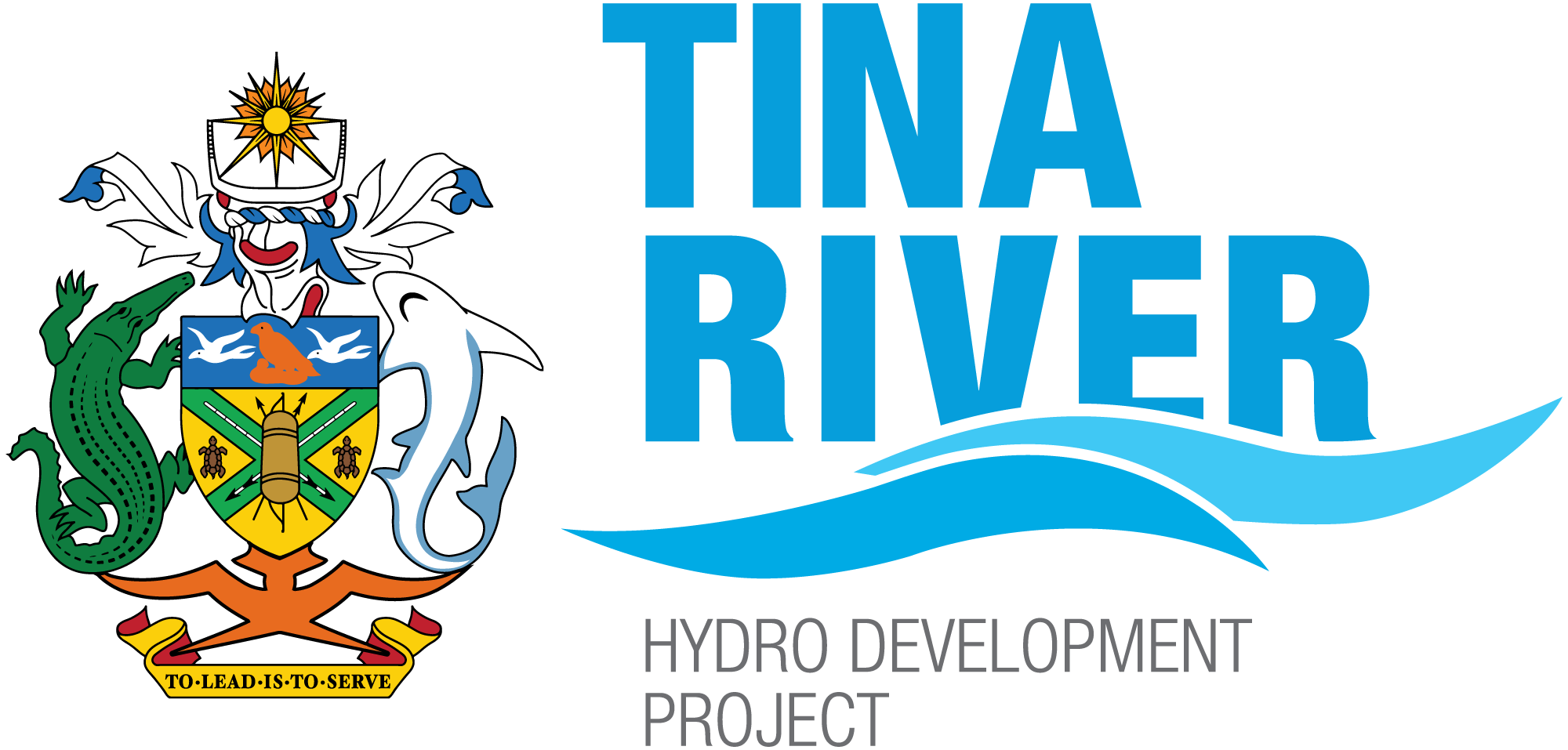Solomon Islands Key Insights
What’s happening in this economy
Solomon Islands’ population (614,000) creates challenges for infrastructure and service delivery. It is small but spread across nearly 1000 islands, of which over 300 are populated, with 80 % of the population living in rural areas. Solomon Islands has 63 distinct languages, with numerous local dialects.
- Solomon Islands faces challenges providing employment opportunities for a growing youth population. Currently around 70 per cent of the population is aged 34 or under.
- Using active contributions to the National Provident Fund as a proxy indicator, there are approximately 56,000 people engaged in formal employment in Solomon Islands.
- The economy is heavily weighted towards natural resources. Mining could provide significant revenue but ongoing issues with governance remain a barrier.
- Tourism is underdeveloped and needs substantial investment.
- Solomon Islands is the third largest recipient of Australian aid after PNG and Indonesia. In 2017–18, Australia’s development program in Solomon Islands is estimated to be AUD 142.2 million (approximately 19 per cent of GDP in 2017).

Trade, investment and commercial opportunities and activities
Australian companies present in Solomon Islands are engaged in sectors including:
- banking,
- mining,
- shipping,
- logistics,
- tourism,
- legal, and
- property management.
- Exports are heavily concentrated in logs, tuna and palm oil, which are susceptible to natural disasters and external price shocks:
- log exports account for 67 per cent of Solomon Islands’ total exports and make up 27 per cent of GDP.
- Solomon Islands is widely considered to have relatively untapped tourism potential, but this requires significant support
- Mining is seen as a potential key driver of growth
- the Solomon Islands Government has limited experience in managing a minerals-based economy and the only legal operating mines a small number of low-technology bauxite operations gold on Guadalcanal and nickel in Isabel present the best prospects for early production in large quantities
- The Australian Government is working with the World Bank on mining legislative reform, and is supporting efforts by linking progress in the sector to budget support payments.
- Overall foreign direct investment in Solomon Islands was approximately AUD 51 million in 2017.
Major initiatives to capitalise on include the:
- Coral Sea Cable System and Solomon Islands Domestic Network,
- Tina River Hydropower Project,
- Gizo Market Redevelopment,
- Solomon Islands Annual Cocoa and Chocolate Week Festival,
- Australia–Solomon Islands Business Forum.
- Pacific Games which are to be held in Honiara in 2023.
Trade policy and negotiations
Solomon Islands is a signatory to the PACER Plus agreement and is working through domestic processes towards ratification. The country has also been a member of the WTO since 1996, and the General Agreement on Tariffs and Trade since 1994.
Solomon Islands is a member of the South Pacific Regional Trade and Economic Cooperation Agreement. It is currently in negotiations with the European Union to join to the interim Economic Partnership Arrangement.
Download the Solomon Islands Key Insights factsheet here.
Download the Frequently Asked Questions (FAQ) here.
Disclaimer – this information has been sourced from the The Department of Foreign Affairs and Trade (DFAT), who has taken great care to ensure the information contained in this publication is correct and accurate. DFAT does not guarantee and accepts no legal liability arising from or connected to the accuracy, reliability, currency or completeness of any material contained in this publication. Readers should exercise their own skill and care in using the material contained in this publication and carefully evaluate the accuracy, currency, completeness and relevance of the material for their purposes.
